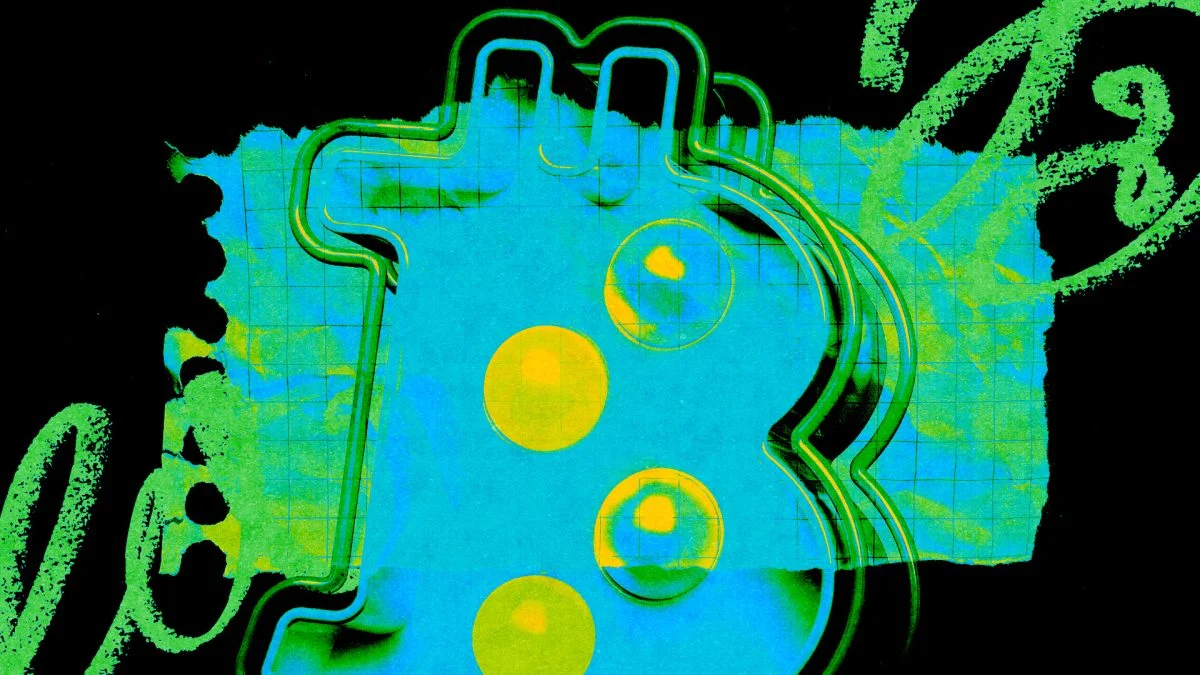Bitcoin Makes Historic Move With Fourth Halving, Miners’ Block Subsidy Shrinks To 3.125 BTC
- The fourth Bitcoin halving event has concluded, marking the start of a new era for the network.
- Miners’ Bitcoin block subsidy reward has reduced from 6.25 BTC to 3.125 BTC.

Bitcoin’s recent halving is now complete, reducing miners’ block subsidy rewards from 6.25 BTC to 3.125 BTC.
At block height 840,000, Bitcoin’s fourth halving signifies a new era for the network. Despite hopes for a notable date, the halving proceeded without alignment with 4/20 for the U.S. market as miners increased hash rate prior to the subsidy reduction.
Bitcoin halvings occur automatically every 210,000 blocks, approximately every four years, reducing miners’ subsidy rewards by 50%. However, they still earn transaction fee rewards for each block mined.
Before this halving, Bitcoin had undergone three previous halving events, reducing block subsidy inflation from 50 BTC to 25 BTC in 2012, then to 12.5 BTC in 2016, and 6.25 BTC in the last halving on May 11, 2020.
With this halving, miners are expected to produce around 450 BTC per day on average, down from 900 BTC previously. Ultimately, there will only be 21 million bitcoins in existence.
Halving events will continue until the last bitcoin is mined around 2140, after which miners will solely earn from transaction fees.
The Industry Responds: “Miners Poised To Succeed In Their Gamble”
Kraken’s Head of Strategy, Thomas Perfumo, highlights today’s halving, often dubbed “the halvening,” as particularly significant for various reasons.
“Firstly, after April 2024, nearly 95% of all bitcoins that will ever exist will have been mined. Furthermore, the annualized growth of bitcoin’s supply each year will soon fall to less than 1% for the first time,” he said.
Despite this year’s rise in miner revenues due to the surge in bitcoin’s price, the full extent of the halving’s impact on less efficient mining operations and overall network metrics post-subsidy reduction is yet to unfold.
Binance CEO Richard Teng informed CoinNerd that the decrease in subsidy rewards might prompt certain miners to leave the market, potentially causing a temporary strain on the network’s processing capacity until the next difficulty adjustment.
“The Bitcoin network has shown resilience in the face of such challenges in the past. Advancements in mining technology and strategies, as well as potential adjustments in mining difficulty, could mitigate the impact of reduced miner participation,” Teng said. “Additionally, some miners may opt to switch to mining altcoins or explore alternative revenue streams within the crypto space, which could help maintain a balance in the overall mining ecosystem.”
“Some miners are anticipated to face increased pressure due to the reduced block rewards, which could force less efficient companies out of the market. This could lead to greater centralization of mining power among larger, more financially robust entities,” Bitfinex Head of Derivatives Jag Kooner said.
“However, this shift also presents an opportunity for innovation and efficiency improvements within the sector. Miners might explore new regions with cheaper energy sources or invest in more efficient mining technology to maintain profitability. We’ve also seen a lot of miners moving supply (potentially selling or using it as collateral) to allow for liquid cash flow in preparation of upgrading their machinery,” Kooner added.
VC firm Framework Ventures also provided its perspective.
“If past bitcoin halving cycles are any indication of the future, the impact of the upcoming halving might not become apparent until more than a year, or possibly even 18 months later,” co-founder Michael Anderson suggested. “That said, this is the first cycle an all time high has been reached before a halving, and so it’s entirely possible that bitcoin halving market trends might be changing as more and more institutional money enters the market.”
Bitcoin exchange-traded funds (ETFs) launched in the United States in January of this year, marking a distinctive element this time, with net inflows surpassing $12 billion.
“During this halving cycle, miners have been selling less bitcoin on exchanges, indicating a more bullish stance amid price surges and increased accessibility driven by ETF inflows,” Adrian Fritz, Head of Research at 21Shares, which offers one of the ETFs alongside Ark Invest, said.
On the other hand, Ledger CTO Charles Guillemet expresses notable optimism for the upcoming cycle. Guillemet remarked to CoinNerd, “The 2024 halving cycle stands out distinctly from previous ones due to the SEC’s approval of spot bitcoin ETFs, which significantly boosted bitcoin demand and propelled the price to a record high in March 2024.”
“Thanks to this unprecedented demand, and if the bitcoin price remains relatively consistent where it is now, miners won’t have to unplug their machines and sell their bitcoin savings to survive post-halving. In other words, miners are about to win their bet!,” Guillemet added.
With Transaction Fees Gaining Significance, Miners Pivot Towards New Activities Within The Bitcoin Ecosystem
In the past, transaction fees played a minor role in Bitcoin miner rewards compared to block subsidies. However, with heightened activity on the Bitcoin blockchain, especially related to Ordinals, and the halving of subsidy value, transaction fees will now play a crucial role for miners.
“The upcoming halving will have a multifaceted impact on the Bitcoin miners by reducing block rewards and shifting profitability and operational costs,” Fritz added. “Miners may seek refinancing options to navigate this shift and maintain operations, and as block rewards diminish, transaction fees will become the primary revenue stream for miners — indicating a shift in the overall Bitcoin economy.”
“This year’s halving is unique in that it comes amid a series of other significant events in the Bitcoin and wider crypto ecosystem,” Binance CEO Teng said. “In addition to the ETF breakthrough, which has spurred institutional interest and participation, another major current in crypto today is the boom of the Layer 2 and DeFi activity on the Bitcoin network, fueled by the popularity of the Ordinals protocol and Bitcoin inscriptions.”
Introduced in January 2023 by Casey Rodarmor, the Bitcoin Ordinals protocol enables storage and exchange of digital content on the Bitcoin network. Utilizing satoshis, the smallest bitcoin units, users can embed NFTs, BRC-20s (similar to Ethereum’s ERC-20s), and other data directly onto the blockchain, creating unique tradable assets.
“This halving is also unique because of ordinals and ETFs. ETFs lead to more inflows. Ordinals give more revenue to miners from fees,” Bob Bodily, CEO and co-founder of Ordinals marketplace and launchpad Bioniq, said. “Because of the inflow and more consistent fee market, this time we won’t see as big of a hash rate drop as typically seen during halvings.”
According to Alexei Zamyatin, co-founder of BOB, a hybrid Bitcoin Layer 2 solution, the current halving epoch will showcase increased collaboration between miners and Bitcoin Layer 2 projects. Miners aim for additional revenue while Layer 2 platforms seek to leverage Bitcoin’s security.
“Miners will continue to look for more revenue and will be incentivized to bootstrap new Layer 2 Bitcoin projects, because the more successful use cases built on Bitcoin, the more miners are able to make as each halving dwindles their rewards,” Zamyatin added.
Jesse Shrader, co-founder and CEO of Lightning Network data provider Amboss, predicts that following the halving, more mining pools will adopt the Lightning Network. This integration aims to reduce payout thresholds and waiting times for miners.
“Excitement is growing on alternative uses for the Bitcoin blockchain, including BRC-20 2.0, Ordinal Inscriptions, Runes and Taproot Assets. These uses create upward fee pressure, but only one is close to being ready to be Lightning compatible to avoid high fees: Taproot Assets,” Shrader added. “Last halving, miners competed heavily to inscribe a special message into the halving block and now that competition is expected to grow with the concept of ‘epic sats’ commanding an extreme premium among Ordinal enthusiasts.”
“The Bitcoin community has become much more open-minded to new ideas during this cycle, and we’re seeing a bigger appetite for Bitcoin-adjacent tech in the VC space as more and more qualified teams start to build Layer 2 infrastructure,” Framework Ventures’ Anderson said.
READ MORE NEWS ON
Bitcoin | Inflation Deflation Deflation Inflation Cryptocurrencies
* We hope this information will help you in your investment process, but this is not investment advice. Every investment carries risk, especially in this industry, so DYOR before making a decision.






